Lecture
Definition of "management structure" * .
The effectiveness of achieving the goals of the organization, the implementation of its strategy * , interaction with the external environment is largely determined by the correctness of the organization’s management structure. The management structure is an ordered set of interrelated management units and individual positions that are in stable relationships with each other, ensuring their functioning and development as a whole.
The management structure of the organization should be focused on the implementation of its strategy * . Since the strategy and plans change periodically, the management structure requires adequate changes. In the conditions of complicating economic development, requiring non-standard solutions, the conflict * between established management schemes and essentially new objects of management or between traditional, rationalistic and entrepreneurial, innovative management styles is becoming increasingly apparent. Creation of management systems, allowing to open creative initiative at all hierarchical levels, is currently the main goal of reorganization of companies, and this is primarily based on the identification of new priorities in the development of the organization.
Structure as a category expresses the internal structure of the system. With regard to management, the structure reflects the subjects of management or the internal structure of the control system.
Relationships between departments and individual posts are maintained through horizontal and vertical communications. Horizontal links are in the nature of coordination and are, as a rule, one-level. Vertical connections are connections of subordination, and the need for them arises when the hierarchy of management, that is, when there are several levels of management. In addition, connections in the management structure may be linear and functional. Linear communications reflect the movement of management decisions and information between the so-called line managers, that is, those who are fully responsible for the activities of the organization or its structural divisions. Functional communication takes place in the direction of information flow and management decisions on various management functions.
The management structure * is a form of separation and cooperation of management activities, within the framework of which the management process takes place aimed at achieving the goals of the organization.
Due to the large variety of factors affecting the structural division of labor, it is specific to each specialization. Nevertheless, it is possible to identify some common features of specialization, which relate primarily to the vertical and horizontal division of labor of managers * .
The division of all work into its component parts is usually called the horizontal division of labor .
A clear horizontal separation in many complex organizations is achieved through the formation of units that perform specific specific tasks and are focused on achieving specific goals.
Since the organization of the work is divided into component parts, someone must coordinate the work of the group to be successful.
The separation of work to coordinate action from the action itself is called the vertical division of labor .
The content of the control system manifests itself in its functions, and the form - in the management structure.
The implementation of management functions is possible when using various organizational forms, types of structures. It is important that they best fit the content and methods of work and contribute to their effectiveness.
Varieties of governance structures. In real-world control systems there is a wide variety of organizational structures. But in this diversity there are general stable patterns of their formation, which allow to reduce all existing structures to a relatively small number of species.
Functional organizational structure * . It is characterized by the creation of structural units, each of which has its own clearly defined, specific task and responsibilities. The specific characteristics and characteristics of a particular department correspond to the most important activities of the entire organization. The formation of the management structure of the organization is divided into traditional functional blocks - it is the departments of production, marketing and Finance (Fig. & 3. 16). In turn, if necessary, these departments are divided into small functional units.
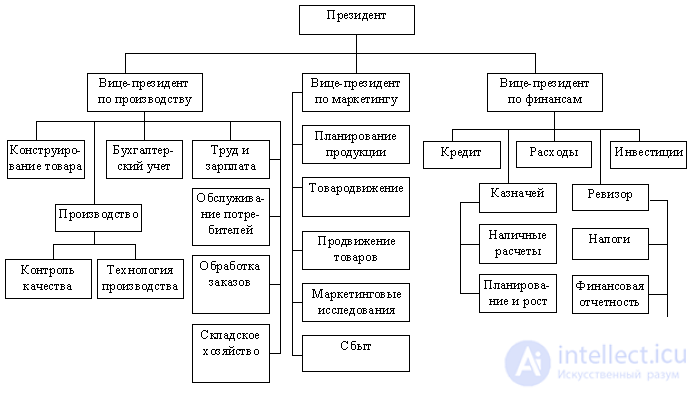
Fig. 3. 16 Typical functional management structure
The advantages of the functional structure of the organization usually include:
But this structure is not without flaws, and this is primarily the fact that units may be interested in realizing their local goals and objectives more than the organization as a whole. In addition, the negative point is that in a large organization with a similar structure, the chain of commands from leader to performer becomes too long, which makes communication difficult. Therefore, it is advisable to use such a structure in organizations: a) producing a relatively limited product range; b) operating in a stable external environment, and c) operating in terms of solving standard management problems.
The main direction of the restructuring of organizational structures in Western firms is the transition from functional schemes to structures based on the allocation of large autonomous production and business units and the corresponding management levels, that is, divisional structures.
Divisional structures (Fig. 3.17-3.19) allow an organization to devote as much attention to a specific product, consumer or region as a small organization that produces one product, either focused on one consumer, or functions in one region, which makes it possible to quickly adapt to changing external environment. Another positive point is improved communications.
However, a possible disadvantage is an increase in costs due to duplication of the same functions in the units.
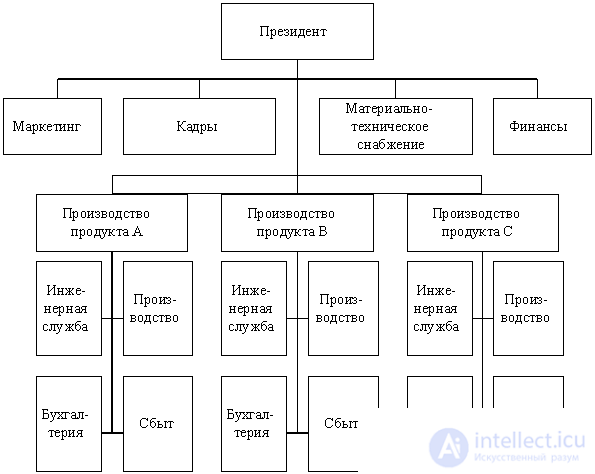
Fig. 3. 17. Product structure
Most of the firms switched to divisional structures in an evolutionary way, i.e. they had no clearly expressed reasons for departing from the functional management schemes.
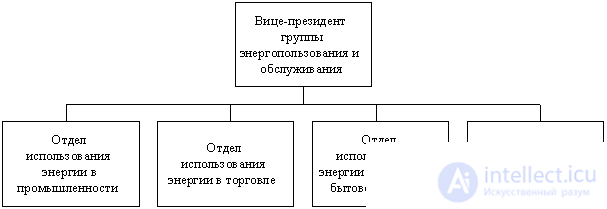
Fig. 3. 18. Consumer-oriented structure.

Figure 3. 19. Regional structure.
However, the uncertainty of external factors of intra-corporate development requires a transition to adaptive forms of organization, characterized by the absence of bureaucratic regulation of the activities of governing bodies, the use of design and matrix structures. The uncertainty of external factors and the acceleration of their development lead to the fact that the same work in the management activities is less and less repeated, it becomes difficult to regulate the performance of various functions. Therefore, in the 1980s, the tendency towards the creation of temporary governing bodies, as well as the central, most important functions at the highest level of management of firms, manifested itself in the formation of adaptive types of organizational structures, and above all, such as design and matrix organizations.
The project organization is a temporary structure created to solve a specific task. Its essence lies in the fact that in one team the most qualified employees of different specializations are united to implement a complex project, i.e. the so-called principle of brainstorming. At the end of the project, such an organization is usually dissolved. An example of such organizations can serve as the development of programs for transition to the market, carried out in 1991 by the team led by Yavlinsky G. A. - “500 days” and the team led by Shatalin S. S., the concept and the program “Going to the market”. The main advantage of such an organization is that it concentrates all its efforts on solving one task.
The matrix organization (Fig. 3.20) is characterized by the fact that the members of the project team are subordinate to both the project manager and the heads of the functional units in which they work constantly. [] The matrix structure allows for greater flexibility and greater coordination of work than in functional and divisional structures, that is, it responds better and faster to changes in the external environment. However, the most significant drawback of the matrix structure is its complexity.
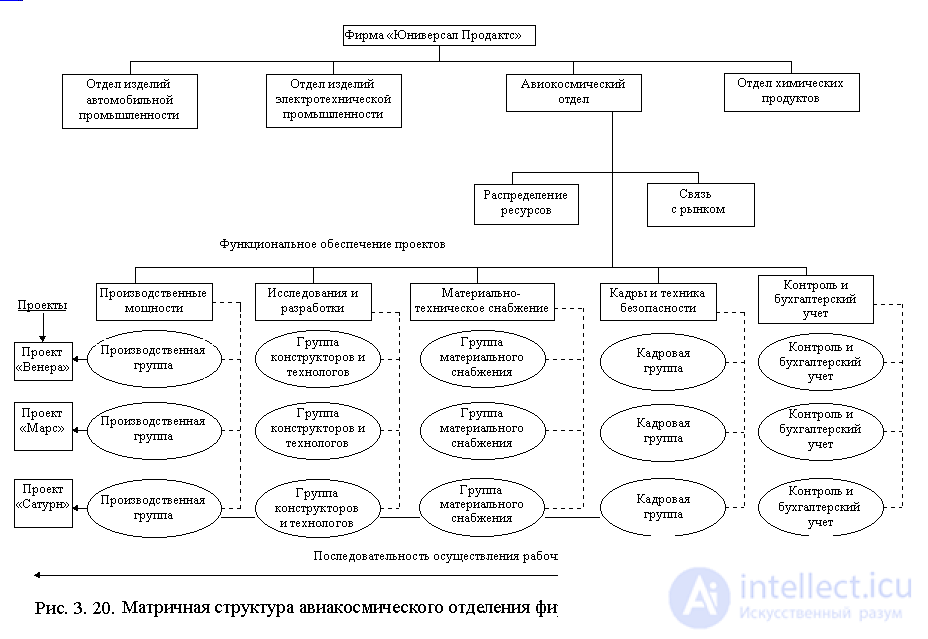
A change in the strategies of firms is also an important reason for their transition to new forms of organizational structures. The organic elements of the strategy is the increase in the size of the company and the expansion of its production and business operations, the diversification of production, and intensive penetration into foreign markets.
Experts point to the close relationship between the size of the firm and the organizational structure of management. Expansion of the enterprise, complication of internal interrelationships create conditions and also necessitate the adoption of complex decisions aimed at restructuring intra-company management, increasing the firm leads to a deepening of structural differentiation (branches, management levels, organizational units). In turn, this leads to an increase in administrative and management costs, as well as costs associated with coordination, but does not diminish the advantage of the homogeneity of large firms, which are due to the fact that these firms are managed from a single center. However, the structural differentiation inherent in large firms requires the use of indirect (economic) methods of management and coordination of the activities of various organizational units. Among the main goals pursued by large and medium-sized firms in the restructuring of organizational structures are the following:
The most important management tool inherent in almost all organizational structures, and especially organizational structures of large organizations, are committees or commissions. The Committee is one of the forms of division of managerial work, which is characterized by common work.
Committee members carry out a certain management function, are responsible for it and have certain powers. The undoubted advantages of the committees include collective management, coordination and interaction, the exchange of information and ideas, etc.
The committees are formed with the aim of solving any permanent and temporary tasks. The following are the main types of committees:
Consideration of the experience of building management structures shows that the formation of management units is under the significant influence of the external and internal environment of the organization, which is the main reason for the impossibility of applying a single model of management structure for all organizations. This impossibility is due to the specific features of a particular organization. Creating a modern effective management structure should be based on scientific methods and principles of construction.
Factors determining the management structure. The construction of the management structure is influenced by a number of factors that are different in nature and type of impact on the structure. Therefore, to build a management structure, it is very important to know the factors that form it.
It is possible to identify factors that directly affect the management structure and those actions that occur indirectly, indirectly; factors that determine the structure and those that, although they influence the structure, are generally determined by it; factors associated with the object and subject of management; factors that are “external” in relation to the management structure, and “internal” factors.
The components of the control mechanism itself — goals, principles, methods — act as factors directly affecting the structure of factors .
Market requirements and management objectives have a direct impact on the organizational structure. The value of the target approach in the formation of management structures is constantly increasing. The system of goals of the organization is the basis for the allocation in the management structure of independent units responsible for achieving a specific goal. So, in the system of goals of the production organization, the increasing rate of implementation of NTP, socio-economic development and environmental protection is acquiring an increasing share. Accordingly, for the realization of these goals, the necessary structural units are strengthened and organizationally highlighted.
When constructing a management structure, it is not only the question of how to divide the activities of the organization’s employees horizontally, that is, to determine which tasks each structural unit should solve, acquires special significance. Another important point in building an organization is the division of work along the vertical. Deciding which element of the hierarchical structure should make important decisions is a matter for the top management of the organization. This determines the form of organizational structure and the effectiveness of management decisions.
Strengthening economic methods, expanding economic independence leads to a reduction in management levels, to the elimination of some and the emergence of other structural units (marketing service, etc.).
The main factors affecting the structure are the management functions, their composition, content and volume. The development of management functions explains and conditions the development of the management structure. The management structure is also directly influenced by the scale and complexity of production (type of production), the nature of the products produced and the technology applied; the nature of scientific and technological progress and the methods of its implementation (the pace of updating products and technology, the integration of science and production, etc.); degree of concentration, specialization and co-production; size and location of production.
Along with the factors acting on the structure directly, it is necessary to identify those that affect the structure more indirectly. This group of factors includes personnel, technology, management technology, organization of labor. Although these factors influence the structure, they are generally determined by it. Thus, management personnel influence the structure in terms of its refinement, adjustment, and a certain distribution of functions between structural units and individual employees. But these are still corrective factors, since it is mainly the management structure that determines the composition of positions and the requirements for the qualifications of workers.
The introduction of new computer technologies affects the management structure both in terms of the emergence of new divisions (information services) and in the reduction of employees of individual divisions (for example, accountants). However, this factor is not decisive, since all innovations occur within the framework of existing structures.
The rationality of building an organizational structure is determined by the optimal combination, content and number of internal and external relations of the control object. It is advisable that the internal connections of the object should prevail over the external ones, otherwise the latter will negatively affect the stability of the object.
The influence of the main factors on the management structure is presented in Fig. 3. 21.
Все большее число исследователей приходит к выводу об объективном влиянии реального производственного процесса на организационные формы конкретных предприятий, т. е. о приоритете производственной структуры в конструировании структур управления, что отчетливо прослеживается на рис. 3. 21 [5].
Важнейшим фактором, влияющим на формирование организационной структуры, является норма управляемости * . От неё зависит как численность сотрудников в подразделении, так и число подразделений аппарата.
Таким образом, при формировании структуры управления приходится одновременно учитывать много факторов: цели и систему функций, объем работ и норму управляемости. Приходится учитывать воздействие и личности работника и применяемых средств техники управления. При взаимодействии такого числа факторов важно выделить главный, ведущий. Он практически зависит от особенностей ситуации, общей обстановки и т. д. Формирование реальной структуры - это искусство управления. Здесь влияют и проницательность руководителя, и его интуиция, и его прогнозы о характере развития производства и управления.
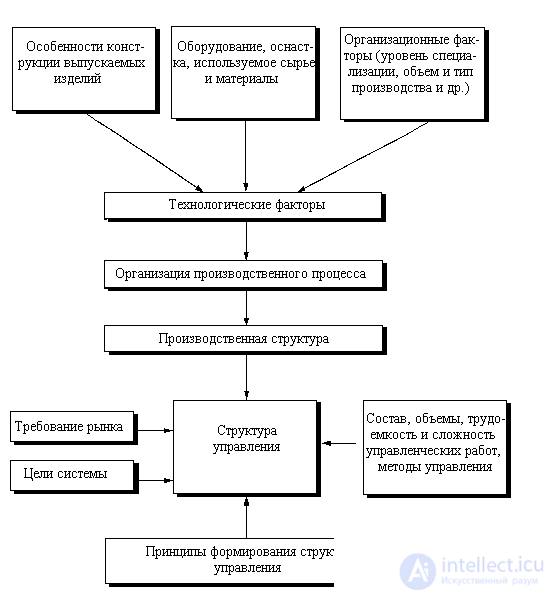
Fig. 3. 21. Основные факторы, определяющие структуру управления
Comments
To leave a comment
Management
Terms: Management